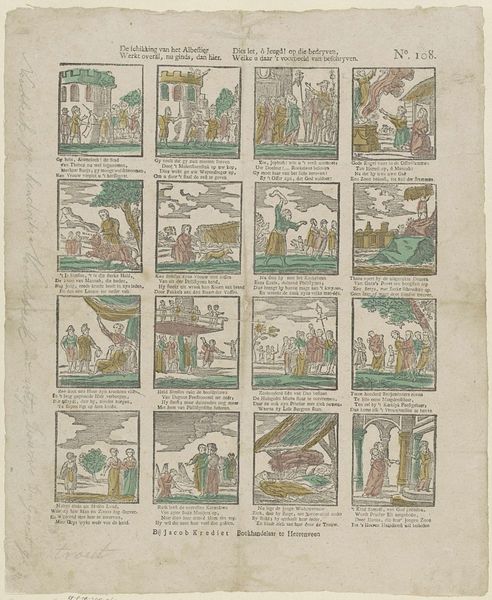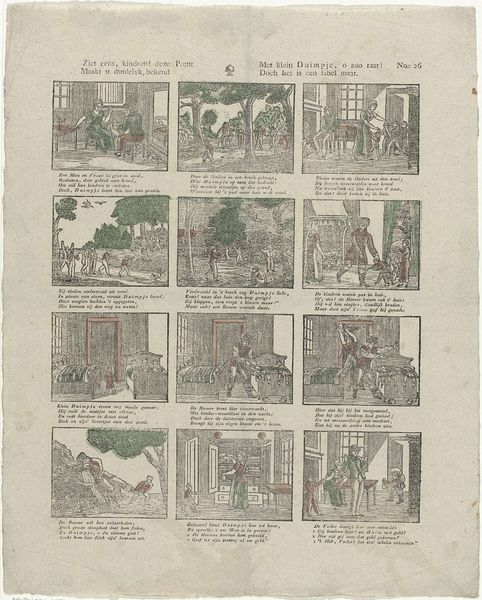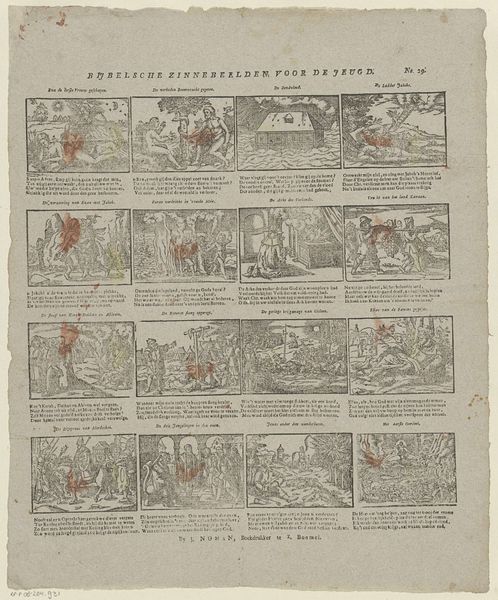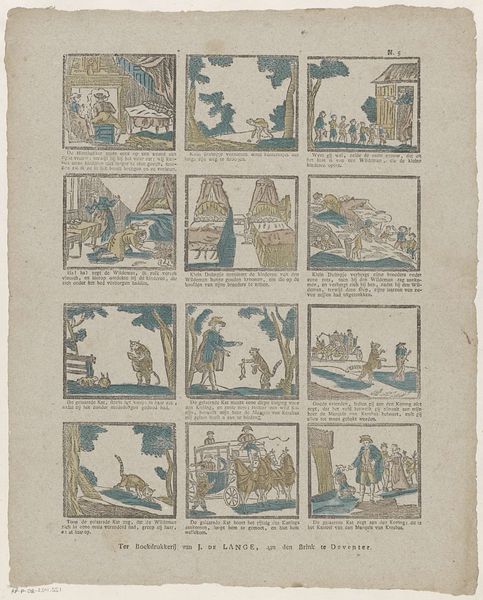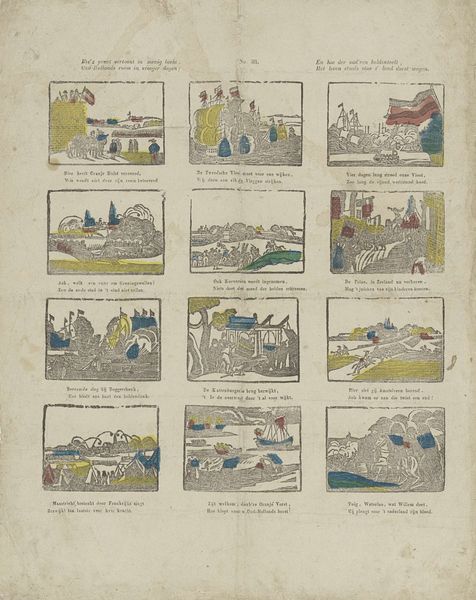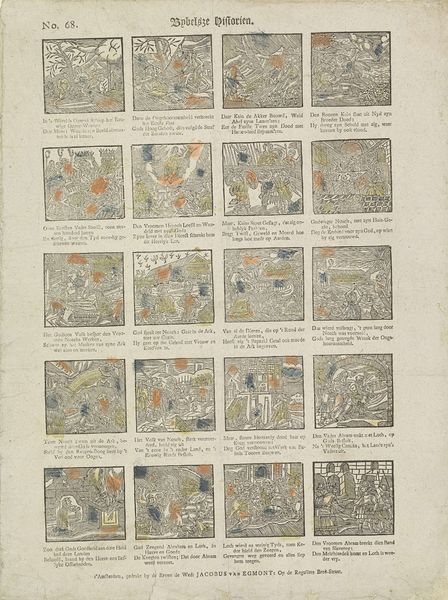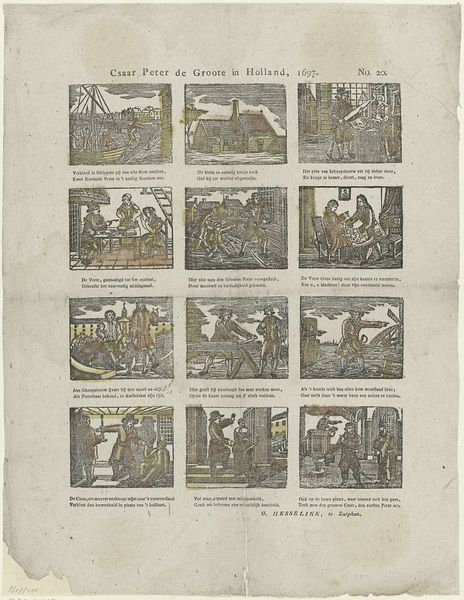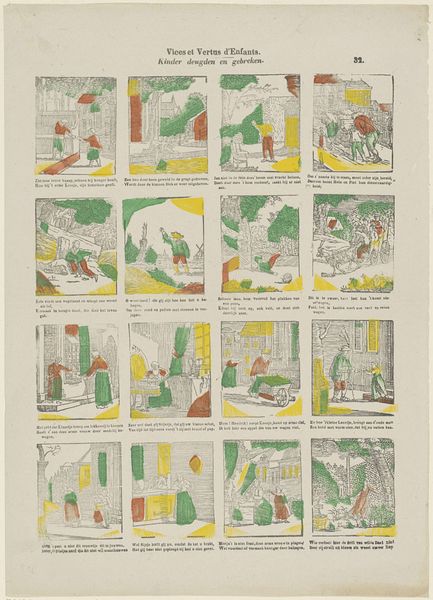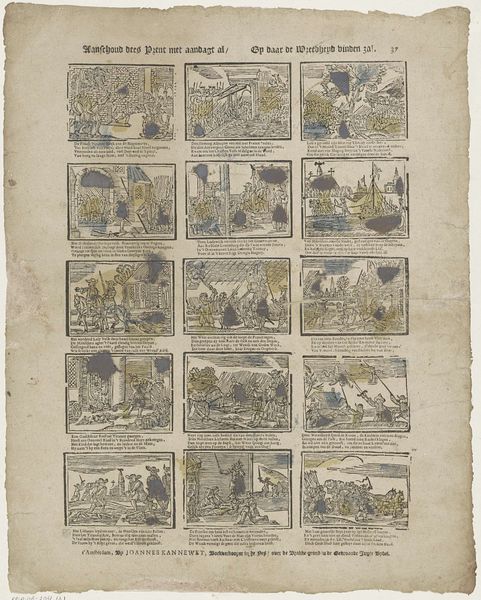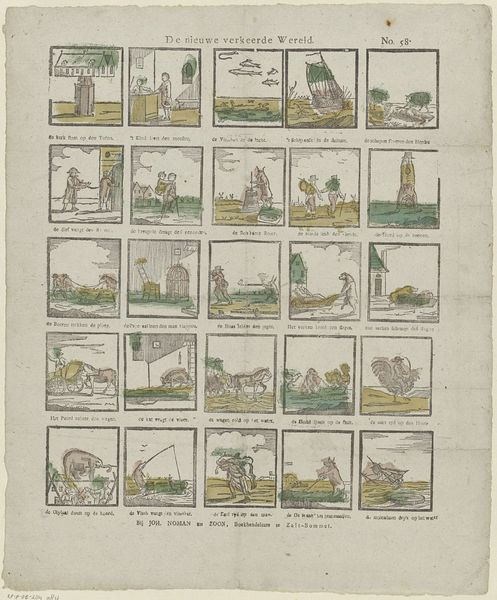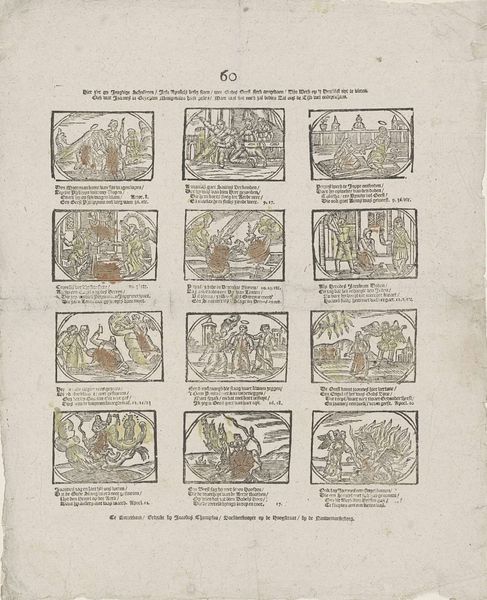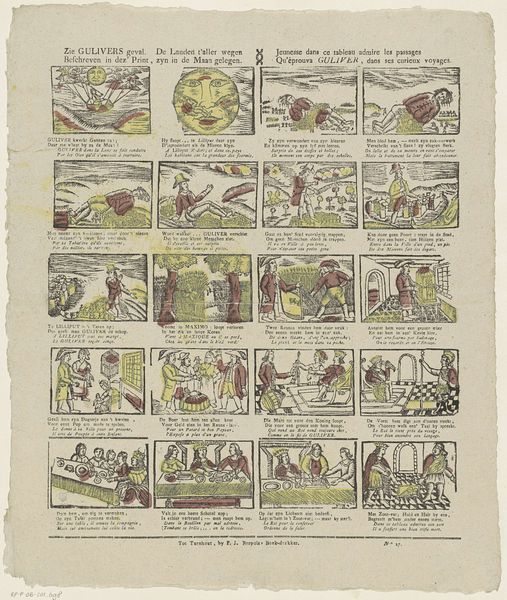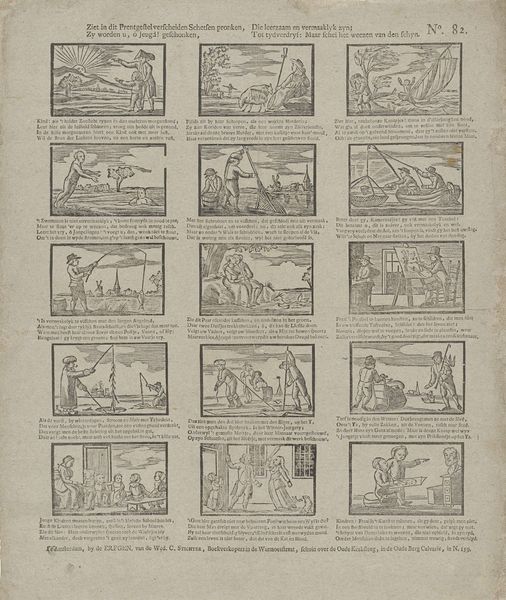
print, etching, engraving
#
aged paper
#
toned paper
#
narrative-art
# print
#
etching
#
old engraving style
#
folk-art
#
engraving
Dimensions: height 411 mm, width 340 mm
Copyright: Rijks Museum: Open Domain
Curator: Before us is "Bijbelsche zinnebeelden voor de jeugd," an engraving on toned paper, created by Abraham van Alphen sometime between 1806 and 1830. It resides here at the Rijksmuseum. What are your initial thoughts? Editor: It reminds me of a primitive comic strip. There's something both charming and unsettling about the naivety of the images combined with these heavy biblical scenes. Almost like cautionary tales. Curator: Indeed. Note the careful arrangement of vignettes, each a self-contained narrative unit. The lines are clean, precise. Van Alphen emphasizes clarity, even didacticism, above all else. Consider the visual rhythm, the balance of light and shadow in each panel. Editor: I see them as heavily influenced by the social context of early 19th century Dutch society, reinforcing religious teachings within a highly moralistic environment. Children, especially, were presented stories that validated proper decorum through stories rooted in Christian values. Curator: Certainly, we see a direct correlation between image and text here. Each little etching acts as a visual shorthand, representing core biblical stories, their symbolic import made literal. This isn't art seeking aesthetic appreciation; its purpose is purely instructional. Editor: I wonder how effective such didactic imagery actually was. Isn’t it interesting that stories filled with sin, betrayal, murder and moral transgressions are taught for religious enlightenment and ethical guidance. It presents an intriguing paradox that must have stimulated the curious minds of its juvenile audience. Curator: Well, irrespective of outcome, the artist adheres to formal rigor, in symmetry, in line weight, even in his restrained palette. There is elegance. Each form is carefully delineated and composed, the values serve the image and narrative, they speak directly to one another Editor: Perhaps. To me it is both fascinating and unsettling. Ultimately, I view its enduring appeal as a record of 19th-century perceptions, assumptions and beliefs centered on morality, society, gender roles and human values. Curator: Yes, those early renderings and choices allow viewers of today the means to evaluate a unique narrative and historical artifact through image, tonality and composition.
Comments
No comments
Be the first to comment and join the conversation on the ultimate creative platform.
